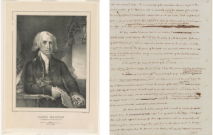Why is it so hard to define intellectual movements in terms of what unites rather than divides them?
Original Methods Originalism Is Public Meaning Originalism
Professor Larry Solum has written an excellent series of posts that that help clarify the question of whether public meaning originalism constrains judges. He both distinguishes the concept of constraint from other related concepts like determinacy and helpfully suggests a framework for empirically analyzing the degree of constraint that originalism provides.
Larry, however, makes one puzzling assertion in the first of these posts. He suggests that there are alternatives to public meaning originalism still supported by serious originalist scholars. He included as one of these alternatives “original methods originalism” – the view of originalism that Mike Rappaport and I have propounded. But original methods originalism is emphatically a form of public meaning originalism.
Briefly described, public meaning originalism is the view that the meaning of the Constitution’s text is that which would be attributed by a reasonable observer or reader at the time the relevant provision of the Constitution is enacted. Original methods originalism contends that the reasonable reader would follow the meaning that flows from the interpretive methods applied to a legal text of the Constitution’s kind. We defend that view by arguing further that the Constitution is written in the language of the law. Thus, a reasonable reader would recognize that the context of the document demands the use of legal terms and interpretive rules, particularly to clarify and make more precise terms and provisions that might otherwise seem unclear.
Larry does not accept our view of the Constitution is written in the language of law or that the original methods of constitutional interpretation help constitute the meaning of the document. But that disagreement, as theoretically important as it is, is not a disagreement about whether the meaning of the document is its public meaning. It is a disagreement about the relevant evidence and method to determine the public meaning.
Originalists sometimes disagree about the meaning of a provision even if they agree that public meaning is the proper criterion. Our disagreement with Larry is more systematic and more generally applicable, but it is ultimately a disagreement about what evidence is relevant and probative.
Indeed, original methods originalism may help bridge the gap between original public meaning and a genuinely different concept of originalism – original intent originalism. Given the well-known problems of determining original intent, it may well be that the Framers intended to employ interpretive rules, including giving primacy to the text, as the best method of determining intent. In that way, original methods may point the way to tempering what remains an important divide in originalist theory.



